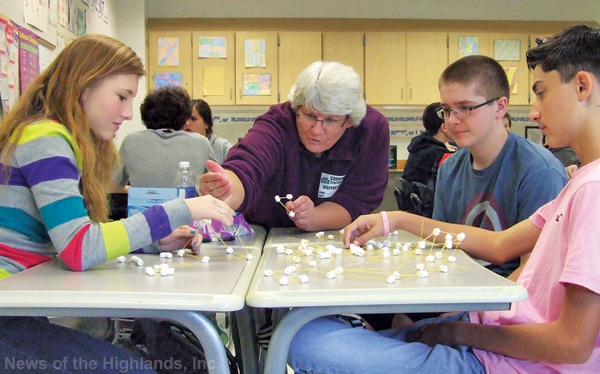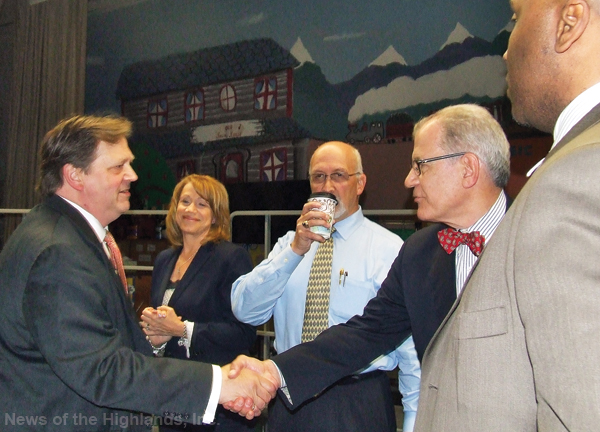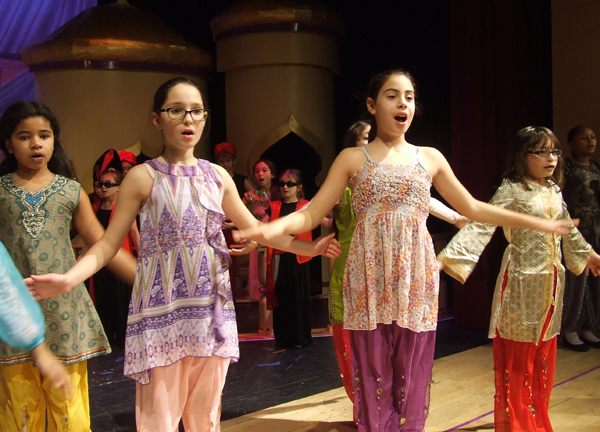
October 10 marked the sixth year in which Cornwall High School held Engineering Day for all its math students. The event was started by retired teacher Kathleen Zammit and continued by Michael Flannery to entice more students, especially females, to choose engineering as a career path. The event was sponsored by the Parent Student Teacher Organization.
Last week, nine engineers, associated with the Mid-Hudson Society of Civil Engineers, volunteered their time to speak to students about their profession.
One of those was Carol Smalley, an environmental engineer and children’s book author. As a water engineer, her focus is bringing the best quality water from its source into homes.
Born and raised in Hershey, Penn., Smalley was commissioned to write two children’s books in honor of the 2009 centennial celebration of the Milton Hershey School. In 1909, Hershey, the founder of the famous candy company, put his entire worth into a trust to help children from income-eligible families.
The first book was a picture book titled, “The Growing Story of Milton Hershey School.” The second was written from the perspective of an eighth grader at the school, in the style of a diary. In “Diary of a Milt” (students who attend the school are called Milts) the main character is asked by his house father what he wants to do after graduation. The child says he wants to be a roller coaster expert (a civil engineer) – riding and designing them. The main character had to make a presentation and write a report about his profession. To assist, the house father gave the student marshmallows and uncooked spaghetti and challenged the youth to create a roller coaster.
Smalley asked the fourth period math class to break into groups of three to five and handed out marshamallows and spaghetti, challenging the students to do the same.
After about 30 minutes, Smalley asked the students, what they learned from the experiment. Most of the groups started with a large, square base, but quickly found their structure to be unstable. Smalley said the use of triangles provides more support for any loads the structure may carry.
Aileen Leahy, a former Cornwall student (2008) returned to Flannery’s fifth period class to discuss the different types of engineering. She explained engineering is the use of math and science applied to a problem that needs solving.
There are five types of engineers: Biomedical engineers design things for the human body such as artificial organs or prosthetics; electrical engineers deal with anything having to do with electricity; computer engineers focus on computers and software systems; mechanical engineers deal with anything that uses a motor or has moving parts; civil engineering includes structural, transporation, water resources, geotechnical, and environmental engineering.
Leahy, who helps design landfills for Cornerstone Environmental Group, LLC, said engineers from different fields often work together on a single project. She said communication throughout a project is important.
Leahy explained in 1998 a spacecraft, built for a mission to Mars, burned up in the atmosphere when one group of engineers used metric measurements while another group used English units.
To close the class, Leahy had the students break into groups to build bridges using marshmallows and spaghetti. The structures had to be designed to hold multiple rubber duckies.



